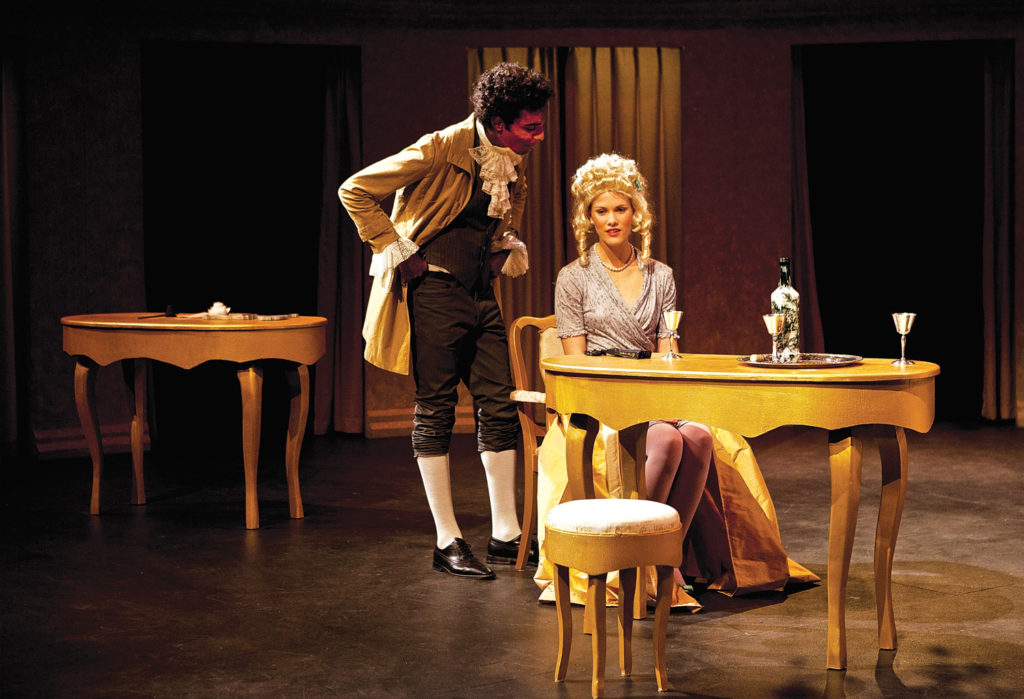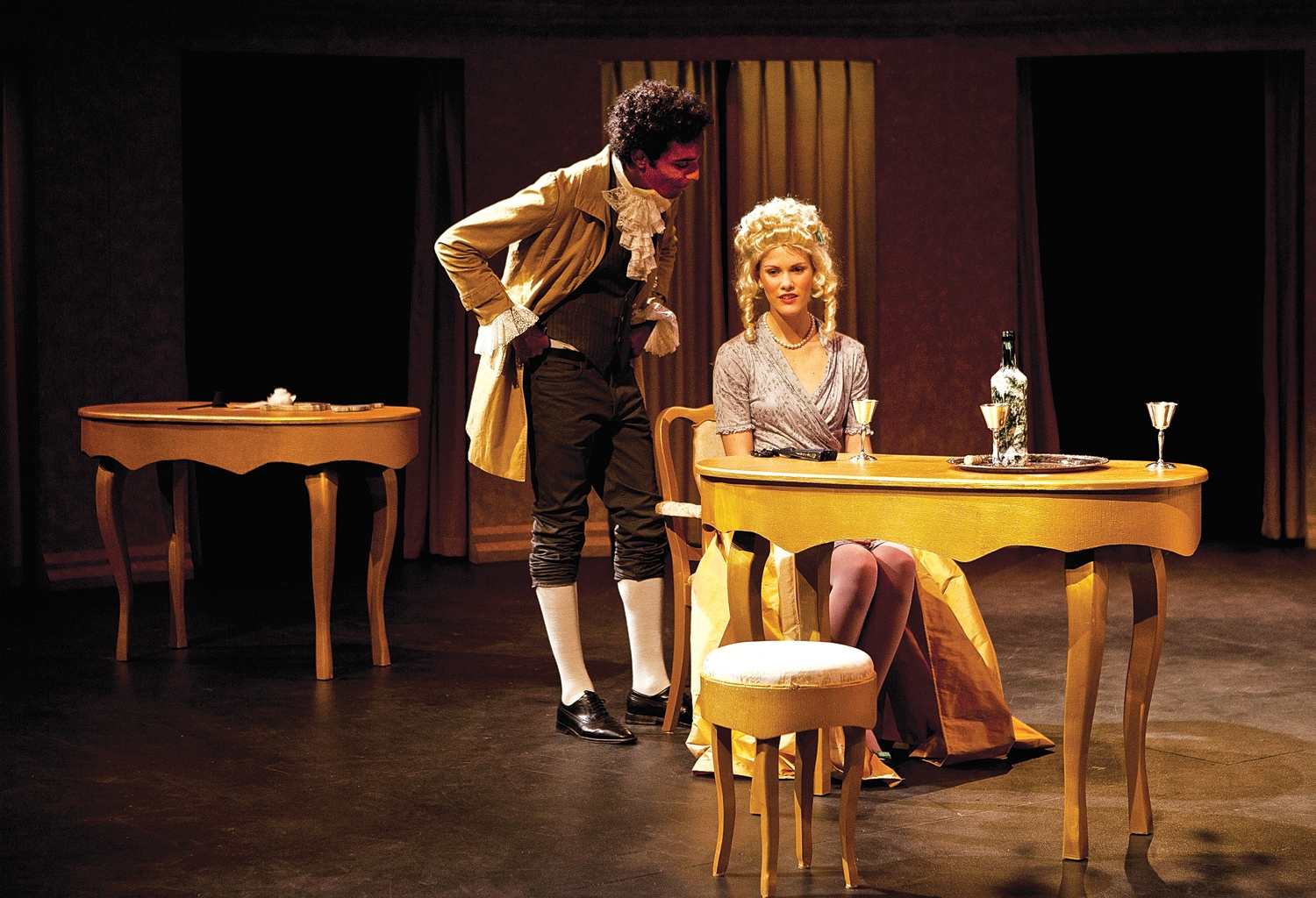The production of The Provok’d Wife, an abridged classic, rules out the snore factor
Sara McGuire
Contributor

We all carry ourselves a certain way to project an image that we want others to see. But what goes on behind the curtain, before we step out onto the street for show time? How do men and women, friends and family, husbands and wives, really feel about each other? Playwright John Vanbrugh considered these questions when writing his famous play, The Provoked Wife. Under the direction of Vikki Anderson, Theatre@York is proud to revive the old play, shortening more than just the title.
Adapted by writer/actor Rick Roberts, the new play is an abridged, more comedy-focused version of the original. It maintains the classic language and fundamental themes of the original, but at a faster, more upbeat pace. The setting is reorganized so that it all takes place solely in the dressing room, with the characters entering and exiting the room through a row of curtained doors lining the back of the scene. While they interact with one another and the audience, they progressively dress up in their costumes. It is a clever way of portraying the theme of people putting on a façade for public scrutiny, acting as a basis for the unfolding story.
Designed by Irina Lipkin-Mejberg, the costumes are a contemporary take on the foppish styles of The Restoration, the period during which the play was originally written. They combine the gaudy, layered structures of the classic clothing with modern highlights.
The extravagance of the costumes reflects the characters who wear them; the more flamboyant characters are garbed in garish clothing, while the quieter characters are dressed more conservatively.
The background music, though generally classical, is sometimes remixed with modern beats. The contemporary spin taken on the costumes and music make for a mismatched feeling of history versus modern day. Although it
felt awkward at times, it did reflect the themes of traditional conventions versus a personal desire to break those conventions.
Roberts’ prologue begins the play in what appears to be an attempt to justify his adaptation. The prologue encourages the audience to read the original script, while also confronting potential purists in the audience about the changes he has made, pleading with them to not blame the actors. While I imagine that the prologue is meant to be humorous, it comes off as self-indulgent and sets an adverse tone to the beginning of the play. Luckily, the show is redeemed by the actors’ gratifying characterization and tight comedic timing.
The characters compete in what is essentially a battle of the sexes. The story revolves around Lady Brute (Astrea Campbell-Cobb), a woman scorned repeatedly by her brutish husband, Sir John Brute (Brendan O’Reilly). She is trapped in her abusive marriage, unable to escape for fear of ruining her reputation of being a virtuous wife. Her emotional strife is made only worse by her irrefutable feelings for the kind and genteel Constant (Michael Ayres), a man she loves but can never have.
Sir John Brute is a hilarious
caricature of a wife-beating drunkard. He makes most of his entrances by stumbling in, raving about the cursed creatures known as “wives”. Mr. and Mrs. Brute’s
interactions are often hilarious, with both characters stepping aside to plead their case to the audience. At other times, their interactions were upsetting, with instances of domestic violence and emotional turmoil. The actors effectively work the audience, making them roar with laughter one moment, and stunning them to shocked silence the next.
The witty Bellinda (Julie Nolke) and the unyielding Heartfree (Enzo Voci) play off one another nicely. Their snappy banter had the audience engaged and rooting for their undeniable chemistry.
It is Lady Fancyfull (Adriana Crivici) who arguably drew the most raucous reaction from the audience. As her name suggests, her character is utterly ostentatious, striking dramatic poses, curtseying absurdly low, and speaking with a flowery trill.
Accompanied by her adorable French maid with her own personal agenda, (Natalie Novak), Lady Fancyfull captured the audience’s attention and challenged them to try and keep up with her over-the-top antics.
Despite some questionable directorial choices, Theatre@York’s production of The Provoked Wife was successful. While some people may be taken aback by the classical language combined with a more contemporary design, most will find themselves in stitches. It is a show that benefits from being abridged, as it is able to amuse the audience while not dragging on long enough for their attention to wane. As it stands, running at about an hour and a half, The Provok’d Wife is short, sweet, and worth a watch.


